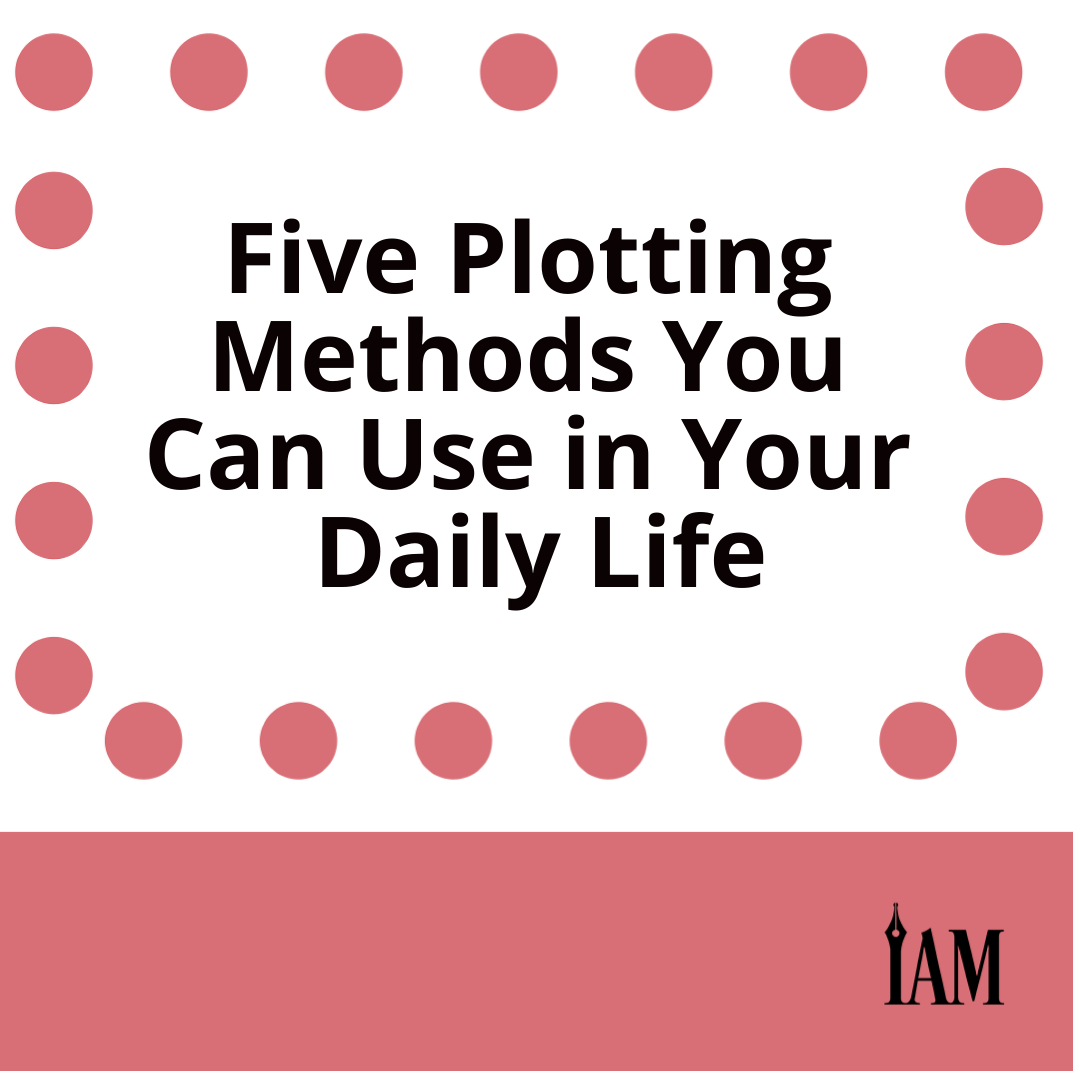It’s a brand new year and, if you haven’t done it already, it’s a great time to make a plan for your author business. If you’re a plotter, you probably already know plenty of planning methods like the back of your heart for outlining your novel, from Save the Cat to the Snowflake Method. But have you ever thought of using one or more of those same outlining methods for plotting out your business? Pantsers, take note—even if your drafts steer their own courses, your author career might benefit from some extra direction from time to time. And when your book business needs an outline, what better method to use than the ones that drive our stories?
Below, we’re sharing possible ways you could do that, whether you’re a Type A organizer or prefer to let your characters drive the ship. Try one of our examples on how to map out your 2023, or use them as a source of inspiration before creating a system of your own. It just might be the most important story you write this year.
1) The Snowflake Method
With this method, start by summing up your novel with just one sentence. Expand that sentence to a one-paragraph summary, then a one-page summary, including goals and motivations for each character. Over the next stages, continue expanding your character descriptions further and deeper until you can produce a four-page overview of your novel.
You’re now at the point where you know your characters well and have a synopsis that can be easily expanded into scenes.
There’s a little more to the Snowflake Method than that—if you’re not familiar with it, you can read more from its creator, Randy Ingermanson, on his website, https://www.advancedfictionwriting.com. But now, looking at that plan for a novel, it’s not too difficult to see how you could use the same process to plan your goals for this year.
Start off small with just one sentence to describe what you want out of your year and where you want to be by the end of December. Many people choose just one word, such as “abundance,” “inspiration,” or “creativity” to focus on for their year, and you can do that here too.
You could use the single-paragraph summary to get excited about your goals and what you want to achieve, then write your own “character description” and look deeply at what motivates you, what stops you from moving forward and how you can overcome that, and where, and who, you really want to be.
Your four-page expanded summary could be your chance to imagine what your year will look like if you achieve everything you want in your life and in your author business, along with the beginnings of the steps you’ll take to achieve that.
Finally, where you’d normally break your four-page summary down into scenes, instead, take your goals and break them down into manageable, achievable steps. Once you’re at that stage, it’s easier to plot those steps in your planner to make a working plan that can propel you to life and author success.
2) Character Sheets
Most of us have probably spent time answering questions about our characters before we started writing our books, and character sheets with pre-written questions can be a handy way to do that. However, have you considered using a character sheet to help you with your author branding?
Here’s the thing with branding: You might think that you don’t have a brand, but you do. Your audience already has an opinion about who you are and what you’re like from what you write, how you write it, and how you come across on social media. If you don’t decide what you want your brand to be, your audience will make up their minds for you.
When building a brand, it’s important to look at your business’s personality, to understand what language the business would use if it were a person and to learn how it would speak, how it would react to the world, and how it would want to be seen—the same set of details you seek to understand when developing a new protagonist.
To start, think about what words you might use to describe your author business, just as you might do with your characters. Is your business cool, edgy, trendy, and elegant, or is it warm, humorous, and friendly, with a messy bun?
Although you can’t control what other people think, you can decide what you want your author brand to be and then consistently put that image out there, leaving you far more in control of how your author brand is seen. Check out Reedsy’s blog post on character development as an example, and download the site’s character sheet or use a similar template to give it a try: https://blog.reedsy.com/character-profile.
The same character sheets that help you create realistic characters that leap off the page can help you nail your author brand too.
3) Save the Cat
Screenwriter Blake Snyder originally created his Save the Cat storytelling method for himself and fellow screenwriters. Snyder felt he needed help during the second act of the traditional three-act structure, where there seemed to be a lot of space to fill between the first and third acts. To fix the issue, he expanded the three-act structure to fifteen beats in order to give him more points from which to ground his story, during what might otherwise be the saggy middle. Why is it called Save the Cat? Because Snyder wanted to ensure that the viewer or reader related to the main character and liked them. He wanted them to “save the cat” to give them a moment right at the beginning to endear themselves to the audience or reader.
Over time, Snyder’s method has become one of the more popular ways to plot a novel, but there’s no reason you can’t use the same beats to plan out your year too.
Although it doesn’t always feel like it, there’s an awful lot of time to fill between January 1 and December 31 of a new year. Why not use your own beats as goals or steps to aim for,
broken down over the year so that your time is more effectively spent and you don’t have too many things happening at once?
For the coming year, try writing each of your goals in a couple of sentences. Then divide them into a series of fifteen—or any number you choose—steps before plotting how and when you’ll get there in your calendar.
4) The Dan Harmon Story Circle
Dan Harmon’s Story Circle starts with a character in their comfort zone at the beginning of a story. Over eight steps, the character goes on a journey, physical or emotional, and ultimately returns to the beginning having changed.
The steps are as follows:
- Character is in their comfort zone.
- Character wants something and decides to take action.
- Character finds themself in an unfamiliar situation.
- Character adapts to the new situation.
- Character gets what they want.
- Character pays a heavy price for what they wanted.
- Character returns to where they started, but …
- … character has changed.
That might be a great plan for story structure, but we think it also sums up what happens from stretching ourselves and reaching for big goals. Although you don’t necessarily pay a big price for reaching for your goals—hopefully, you won’t, anyway—it’s likely that you will learn and change along the way.
If you’ve got big goals for this year, think about this structure, and use it to plan how you’ll get to where you want to be by the end of the year. You can follow the same eight steps you did for your novel:
- Know your comfort zone. What do you enjoy about your current situation?
- What do you want? Choose your goals and how you want to change.
- Take action. Plan out what steps you need to take and write what you need to reach your goals, then start following your plan.
- Adapt. You’ll likely end up in unfamiliar territory, but that was the point.
- Do the work. Now you’re here, how can you learn and grow to get what you want? Are there courses you need to take or people you need to connect with? Find out what you need to do to bring you closer to your goals.
- Pay the price? Hopefully, you can skip this step or at least limit your “price” to the cost of whichever courses or materials you bought previously.
- Celebrate. You did it! Acknowledge that and take time to let it sink in. Reward yourself for getting to this point.
- Return to Step 1. Go back to the beginning and think about what you want next. Choose your next goal with all the new knowledge you’ve picked up in reaching your first goal.
If you’re not great at working on multiple goals at once, a plan like this where you focus on just one goal and then choose another may work better for you.
5) The Fichtean Curve
Looking at the Fichtean Curve for the first time, you might wonder why on earth we’d choose it as a possible strategy for achieving your goals. Authors generally reserve this method of outlining for Mysteries and breathless Thrillers that build to a huge climax. The diagram’s curve starts with rising action for the first two-thirds of the story, then builds to the big climax, which is followed by falling action that continues until the end of the book. The idea is to get the story going immediately with action taking place from the beginning.
When plotted out, the Fichtean Curve divides a story into Crisis 1, Crisis 2, Crisis 3, Crisis 4, Crisis 5, Climax, and Falling Action. Of course, we’re not wishing crisis after crisis on you or your author careers, but consider shaping your business plan into a series of several steps that continually propel you toward a big achievement—your author career’s climax.
This planning method works especially well for the biggest and most daunting goals that we have. Choose your massive goal and then break down the steps you need in place to get to it. After that, just keep pushing the boulder up the hill and persevering until you do.
There’s one final outlining method that can be of great use when making plans to achieve any goal: reverse outlining. With this method, authors begin by writing how their novel ends. Then, once they know the ending, they’re able to walk the story backward step by step until they reach the beginning. The same method is a great way to find the steps you’ll need to take to reach your goals. You know where you’re going and what you want to achieve, so break it down and work it out backward from your end goal to your starting point. Then, find out how long you’ll need to reach each step, and mark the corresponding dates in your planner.
Whatever method you use for planning out your year, we hope we’ve given you some food for thought and maybe some new methods for taking your author business to the next level.






